18 Wild Animals in Cambodia [Wildlife in Cambodia]
Want to know more about the wildlife in Cambodia?
Discover 18 wild animals in Cambodia in this post, as well as interesting facts about them. 🇰🇭
Learn All About Cambodian Animals
Ready to learn all about Cambodian animals?
I’ve always been fascinated by animals, and by how they can be so different from one country to another. In this guide, we’ll focus on the many animals Cambodia has on the land, in the sky, and underwater.
I’ve split the guide into 4 categories:
- Native animals from Cambodia
- Endangered animals of Cambodia
- What is Cambodia national animal?
- How many animals native to Cambodia?
Let’s dive in right away with our first category!
Native Animals from Cambodia
Cambodia is an Asian country located in the southeastern part of the continent, on the Indochinese Peninsula. It is officially a Buddhist country, since it is practiced by more than 97 percent of the population, and it is the official state religion. It is bordered by Thailand, Vietnam, and Laos, and its capital city is Phnom Penh, which counts more than 2,281,000 inhabitants.
An interesting part of the country that I wanted to tackle is its wildlife. In light of that, I have listed the best of it, and I hope you will love learning what animals live in Cambodia.
Here’s the Cambodia animals list.
1. Asian black bear
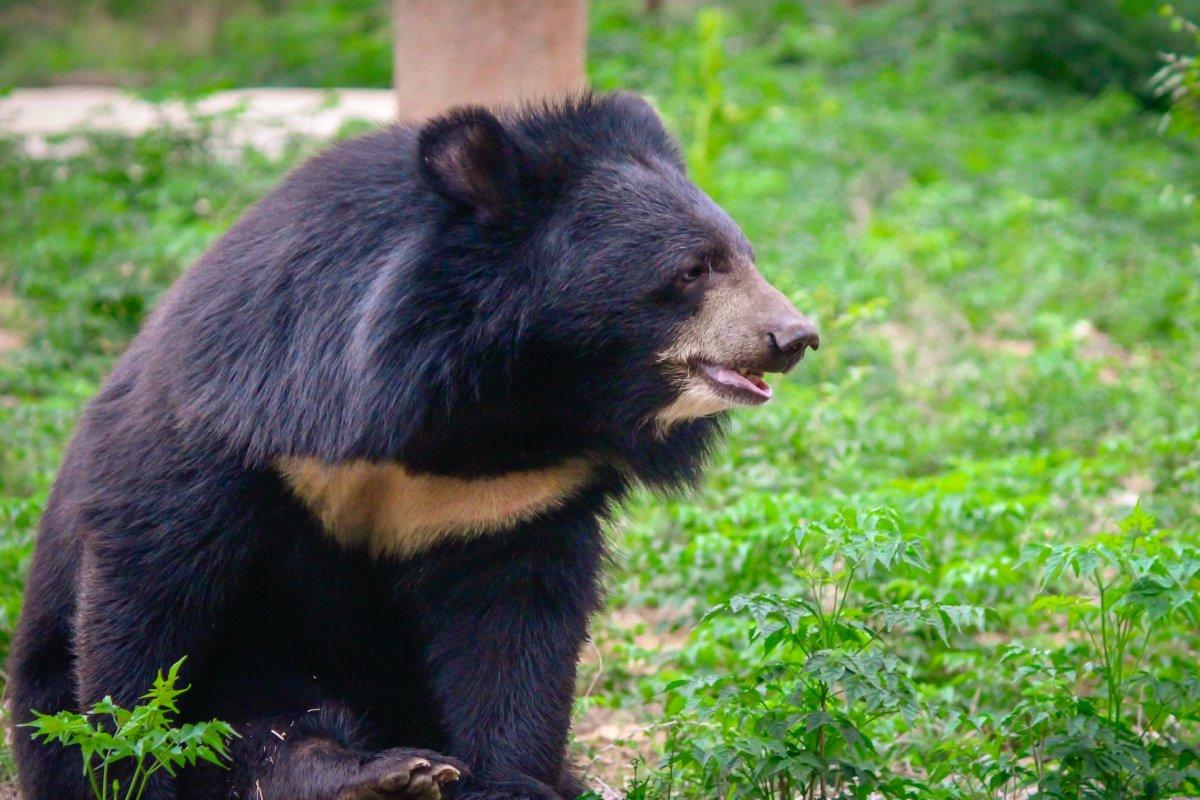
- Name: Asian black bear
- Scientific name: Ursus thibetanus
- Conservation status:
The Asian black bear, also known as the moon bear, the white-chested bear, or the Asiatic black bear, is a medium-sized species of bear native to Asia. It is an arboreal animal that can be found in southern and southeastern Asia, from the North of the Indian subcontinent to Japan and the Indochina Peninsula.
Sadly, this bear is threatened by poaching for traditional medicine and deforestation, which is why it is considered vulnerable.
2. Binturong
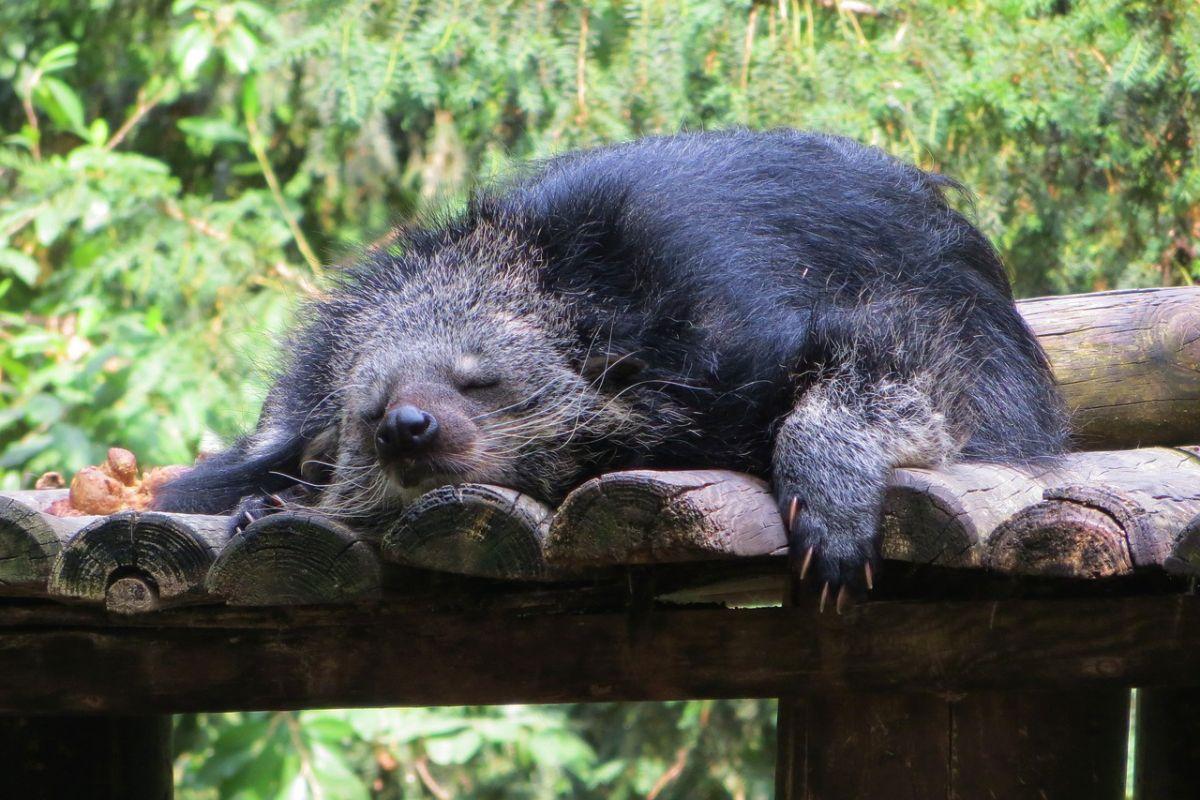
- Name: Binturong
- Scientific name: Arctictis binturong
- Conservation status:
The binturong is definitely a unique and peculiar species, so much so that you might have never heard of it. It simultaneously looks like a raccoon, a bear, and a cat, which is why it is also called the bearcat.
Its global population has been steadily declining since the 1980s, by more than 30 percent in fact. Little is known about the binturong, but it lives in several Southeast Asian countries and is largely arboreal.
3. Pileated gibbon
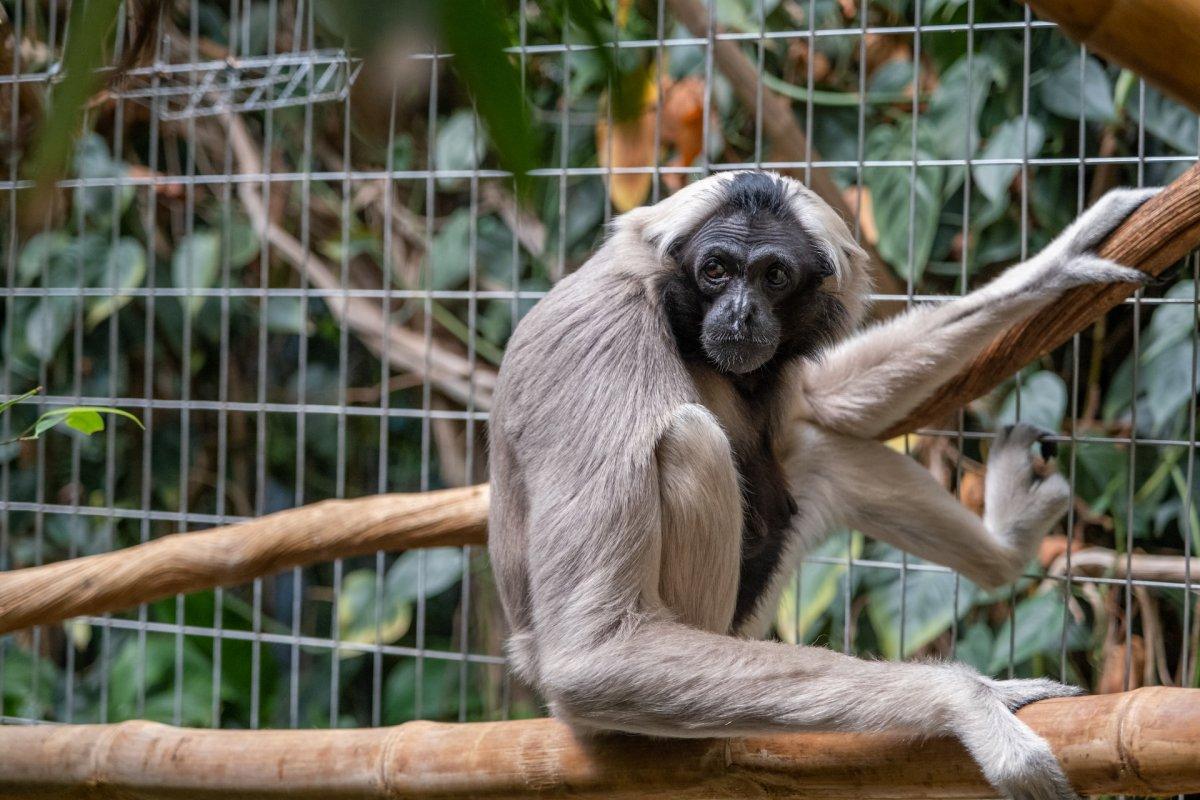
- Name: Pileated gibbon
- Scientific name: Hylobates pileatus
- Conservation status:
The pileated gibbon is a species of gibbon native to small areas of southeastern Asia. Males and females do not look alike at all, since males have bright white fur, while females are rather brown or gray. Their diet is mostly made of leaves, small animals, and fruits.
These gibbons are severely threatened by habitat destruction, hunting, and smuggling. Some organizations cooperate with the Cambodian government to launch rescue programs.
4. Saltwater crocodile
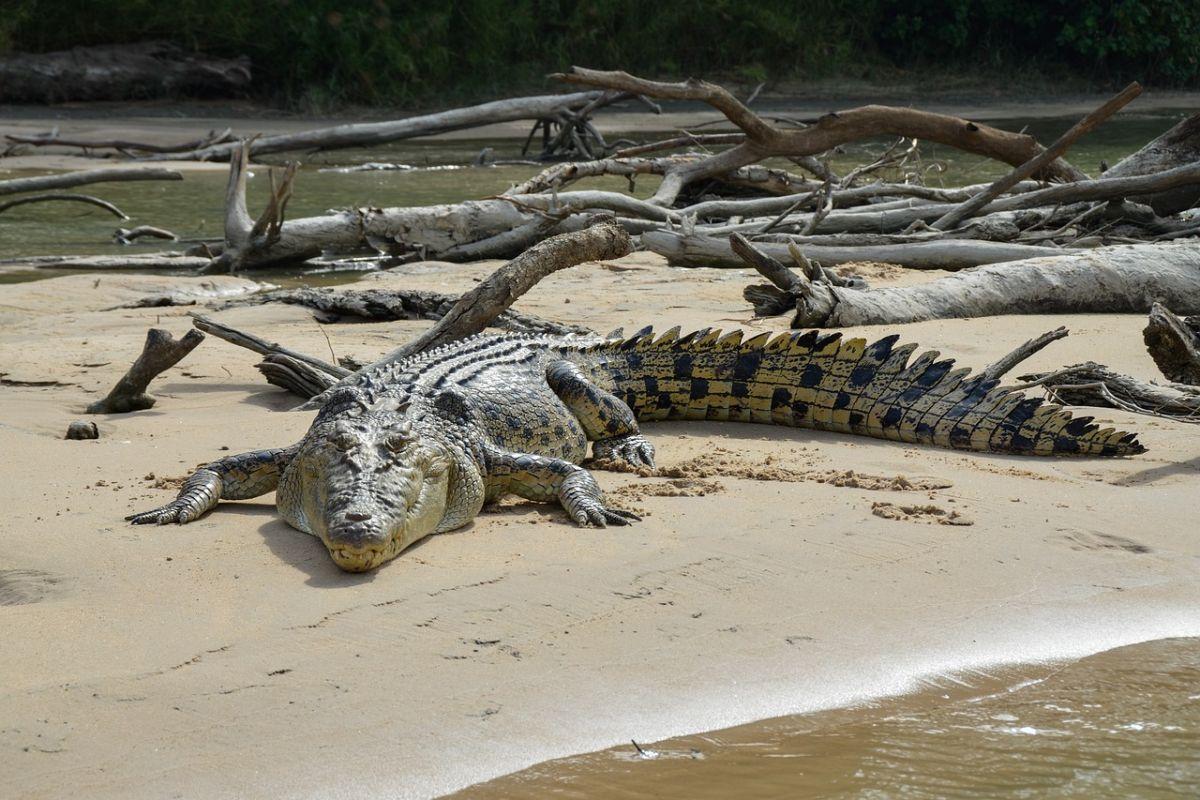
- Name: Saltwater crocodile
- Scientific name: Crocodylus porosus
- Conservation status:
The saltwater crocodile, also known as the estuarine crocodile, the Indo-Pacific crocodile, the marine crocodile, or the sea crocodile, is the largest species of crocodile in the world, as well as the largest living reptile. Males can exceed 6.3 m / 21 ft long and weigh more than 1,300 kg / 2,900 lb, while females are much smaller, very rarely surpassing 3 m / 10 ft.
This crocodile is a hypercarnivorous apex predator.
5. Asian vine snake
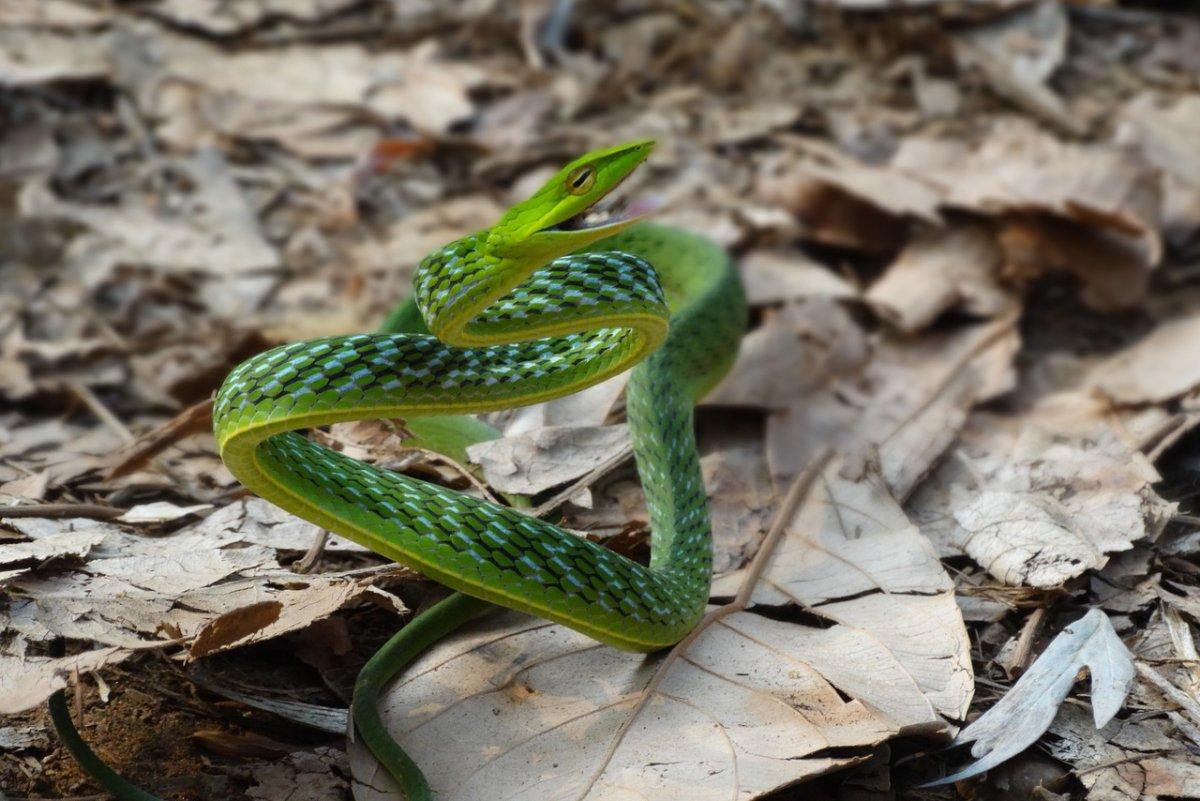
- Name: Asian vine snake
- Scientific name: Ahaetulla prasina
- Conservation status:
The Asian vine snake, also known as the Oriental whip snake, Gunther’s whip snake, or Boie’s whip snake, is a species of snake native to southern Asia. It was first described by Friedrich Boie in 1827, hence its name.
It has a very slender body with a long snout. Its diet is majorly made of amphibians and small reptiles, mostly tree frogs and lizards. It has entered the pet trade in the past couple of years and is now one of the hobbyists’ favorites.
6. Mekong freshwater stingray
- Name: Mekong freshwater stingray
- Scientific name: Hemitrygon laosensis
- Conservation status:
The Mekong freshwater stingray is a species of stingray restricted to the Mekong and Chao Phraya rivers. Its underside has a characteristic orange color, and it preys on invertebrates.
This stingray is considered endangered because of habitat loss and overfishing. It can only be found in large freshwater rivers, and only has 1 pup per litter. Humans do not intentionally fish for this stingray, but most of them are accidentally caught in fishing nets.
7. Asian elephant
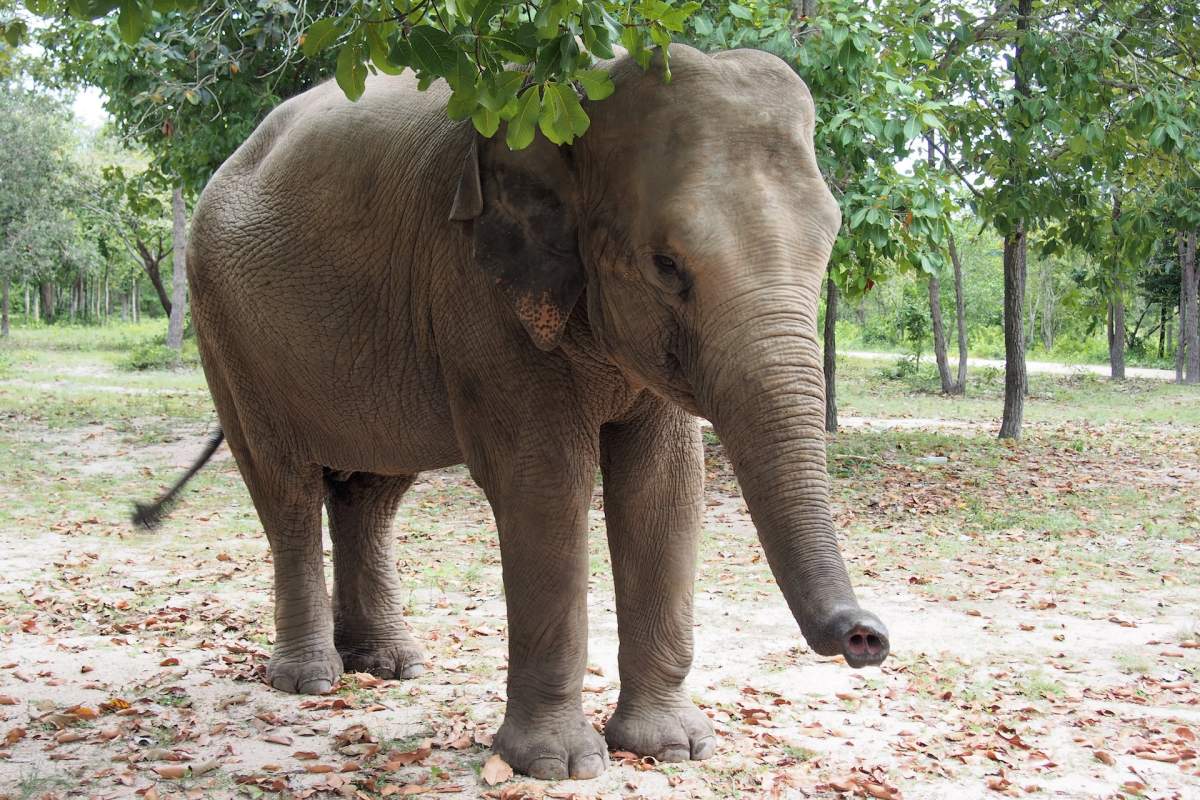
- Name: Asian elephant
- Scientific name: Elephas maximus
- Conservation status:
The Asian elephant is the only elephant species of its genus, and it can be found in most of southern Asia, from the Indian subcontinent to Borneo. There are 3 recognized subspecies: the Indian elephant, the Sri Lankan elephant, and the Sumatran elephant. The first ones are endangered while the last one is on the verge of extinction.
This elephant is the largest living land animal in all of Asia but is sadly majorly threatened by poaching and habitat degradation, fragmentation, and loss.
8. Eld’s deer
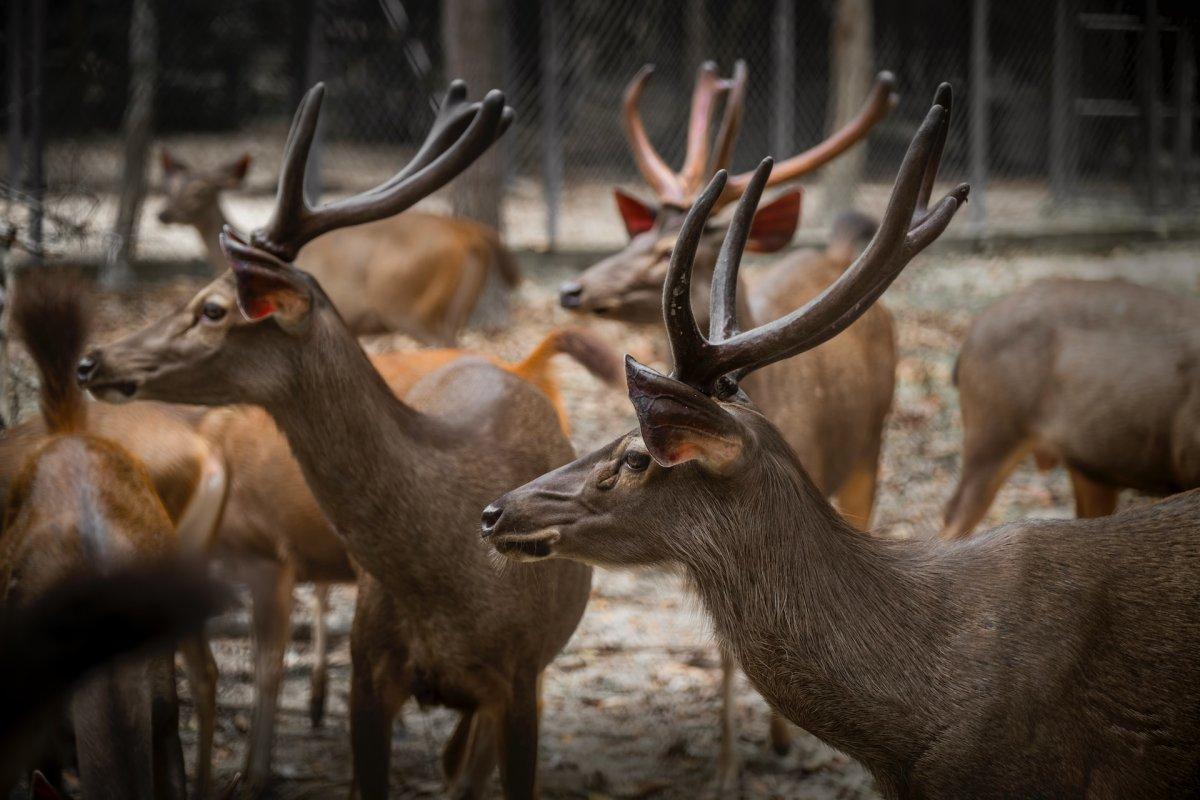
- Name: Eld’s deer
- Scientific name: Rucervus eldii
- Conservation status:
Eld’s deer, also known as the brow-antlered deer or the thamin, is a species of deer endemic to South Asia. It is listed as endangered due to game hunting for its incredible antlers and meat, as well as deforestation.
Most of the time, these animals are solitary. During the breeding season, they gather up in herds of up to 50 individuals. Usually, a single calf is born after a long gestation period.
9. Clouded leopard
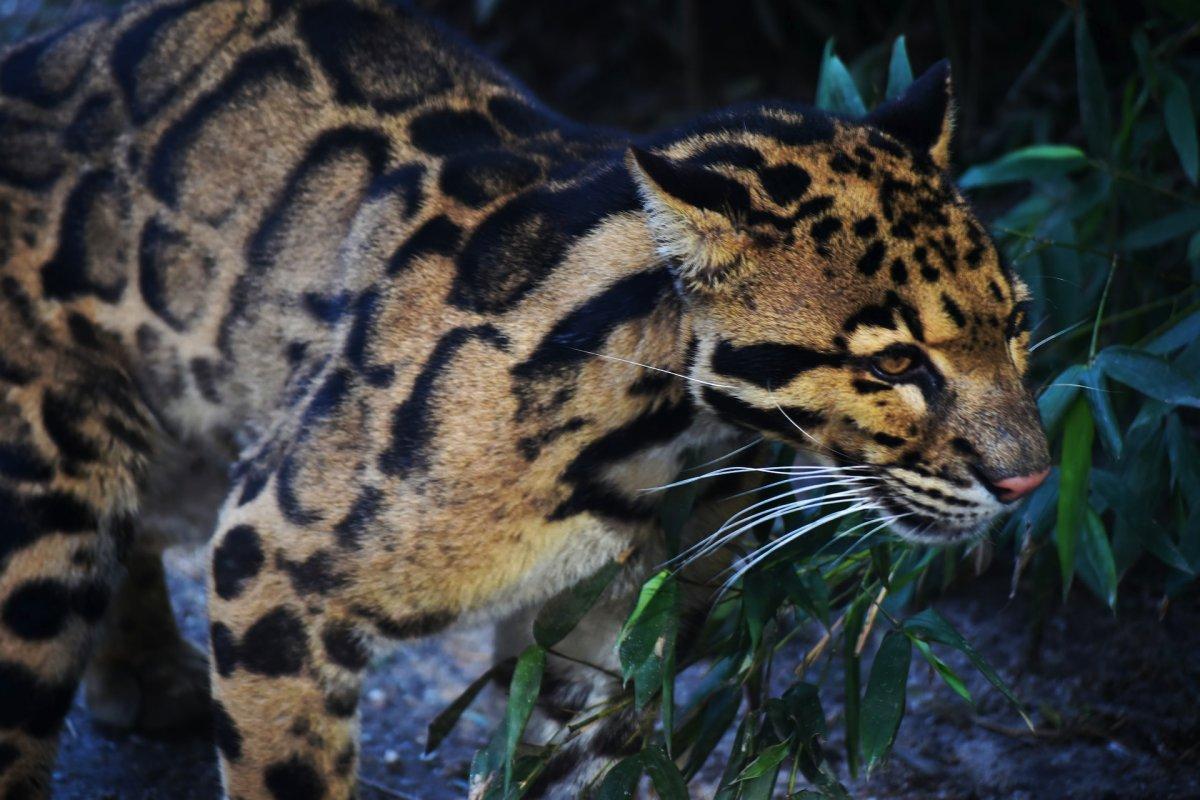
- Name: Clouded leopard
- Scientific name: Neofelis nebulosa
- Conservation status:
The clouded leopard, also known as the mainland clouded leopard, is a species of wild cat that can be found in dense forests around Southeast Asia.
This animal has been known since 1821 when a specimen was brought to London from China. Now, it is vulnerable because of deforestation and commercial poaching. Its coat is one of the most beautiful ones among wild cats, having large cloud-like spots, which is where it got its name from.
10. Irrawaddy dolphin
- Name: Irrawaddy dolphin
- Scientific name: Orcaella brevirostris
- Conservation status:
The Irrawaddy dolphin is a species of oceanic dolphin that can be found near sea coasts and in rivers and estuaries. It is one of the smallest species of dolphin, being approximately the same size as an average human, and it exclusively lives in Southeast Asia.
Because the Irrawaddy dolphin lives next to the coastline, it is much more vulnerable to human interactions compared to other oceanic dolphins. Threats include dam building and electrofishing.
11. Black-shanked douc
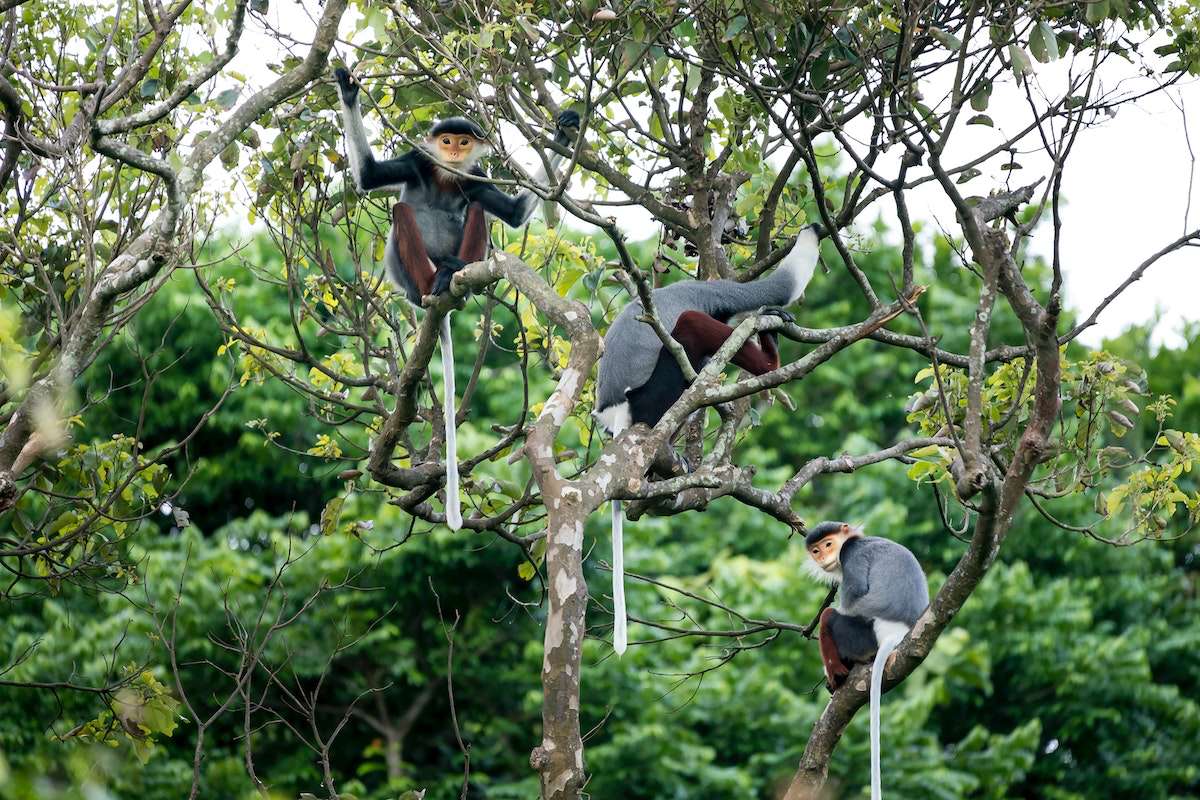
- Name: Black-shanked douc
- Scientific name: Pygathrix nigripes
- Conservation status:
The black-shanked douc is a species of douc native to Cambodia and Vietnam. They are Old World monkeys with no global population, but rather small and scattered ones. An estimated 23,000 individuals live in Cambodia’s Keo Seima Wildlife Sanctuary.
These monkeys are majorly arboreal, and their diet is made of leaves, which is where they get most of their water. They like evergreen forests and tend to live in groups.
12. Leopard cat
- Name: Leopard cat
- Scientific name: Prionailurus bengalensis
- Conservation status:
The leopard cat is a small species of wild cat native to southern, eastern, and southeastern Asia. Even though it is threatened by hunting and habitat loss, it is still considered of least concern and is widely distributed throughout large areas of Asia.
This cat is about the size of a domestic cat, but it has longer legs and webs between its toes. It gets its name from its somewhat leopard-like fur, especially for the Indian subspecies.
13. Ricefield rat
- Name: Ricefield rat
- Scientific name: Rattus argentiventer
- Conservation status:
The ricefield rat is a species of rat native to most of Southeast Asia. It is medium-sized, and has a yellow-brown and black pelage, with a gray and white belly. It is a social animal that lives in large groups with one dominant male and high ranking females.
This rat can be seen in vegetation or maturing fields, which is why it was named this way. It mostly feeds on termites, insects, seeds, snails, and grasshoppers.
14. Lesser false vampire bat
- Name: Lesser false vampire bat
- Scientific name: Megaderma spasma
- Conservation status:
The lesser false vampire bat is a species of bat native to southern and southeastern Asia. It lives in tree hollows and caves and is an insectivorous mammal. If it can, it will favor eating moths and grasshoppers.
Usually, it can be seen in a group of 3 to 30 individuals, and their ecological impact could be either positive or negative: even though they eat many insects that destroy human crops, they also carry and transmit several diseases.
15. Dhole
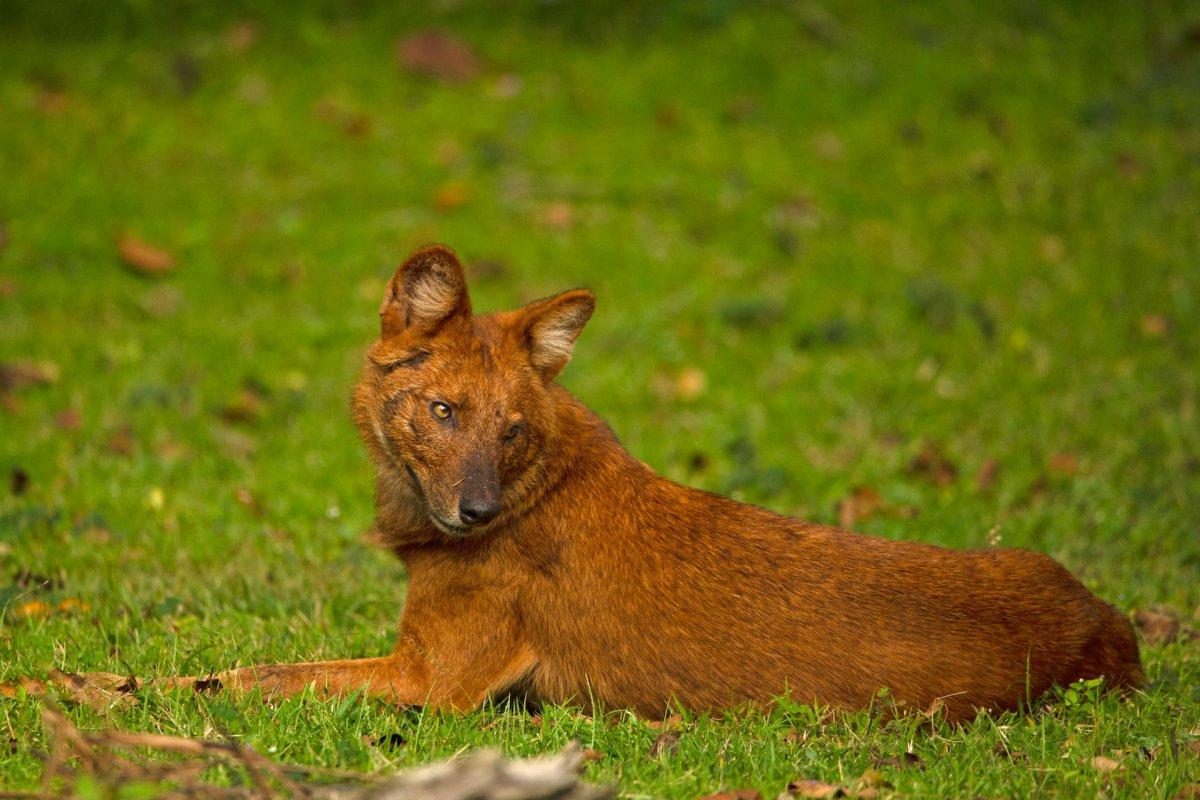
- Name: Dhole
- Scientific name: Cuon alpinus
- Conservation status:
The dhole, also known as the Indian wild dog, the whistling dog, the Asian wild dog, the mountain wolf, or the red dog, is a wild species of canid native to Central, South, East, and Southeast Asia.
It is a highly social animal that lives in large clans without specific hierarchies. Even though most clans are made of about 12 individuals, some with more than 40 animals are known. The dhole is threatened by loss of prey, competition with other species, persecution, disease transfer, and habitat loss.
16. Banteng
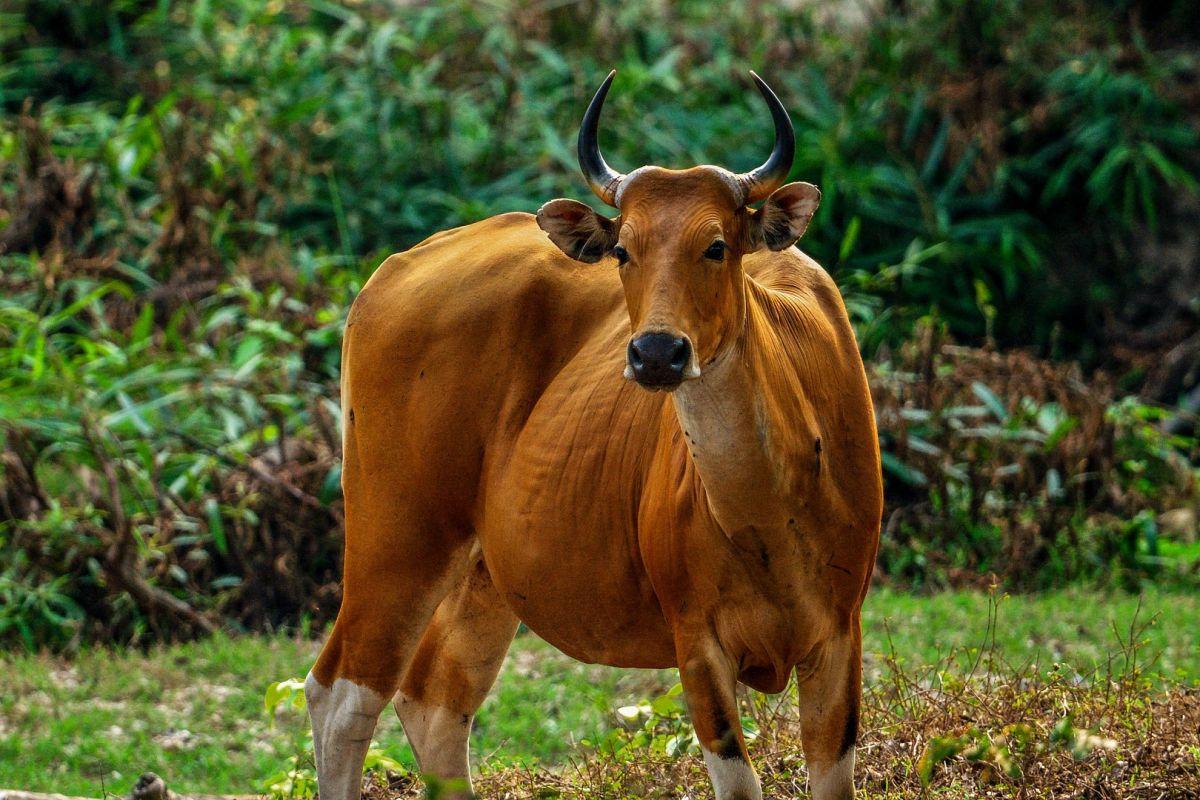
- Name: Banteng
- Scientific name: Bos javanicus
- Conservation status:
The banteng, also known as the tembadau, is a large species of cattle native to Southeast Asia. There are both wild and domestic bantengs, with the latter being slightly shorter than their wild counterparts.
These cattle are active during the day and at night, and they live in herds of 2 to 40 individuals. The biggest populations are located in Cambodia, Java, Borneo, and Thailand, but this animal is threatened by poaching and habitat fragmentation.
17. Asian giant softshell turtle
- Name: Asian giant softshell turtle
- Scientific name: Pelochelys cantorii
- Conservation status:
The Asian giant softshell turtle is probably the weirdest and most unique species of turtle you have ever seen. It is also known as the frog-faced softshell turtle and Cantor’s giant softshell turtle, and is sadly critically endangered, and has largely disappeared from its former range.
Opposite to most other turtle species, this one has a smooth olive-colored carapace. It is one of the longest turtles in the world and is a carnivorous ambush predator that feeds on mollusks, fish, and crustaceans.
18. Reticulated python
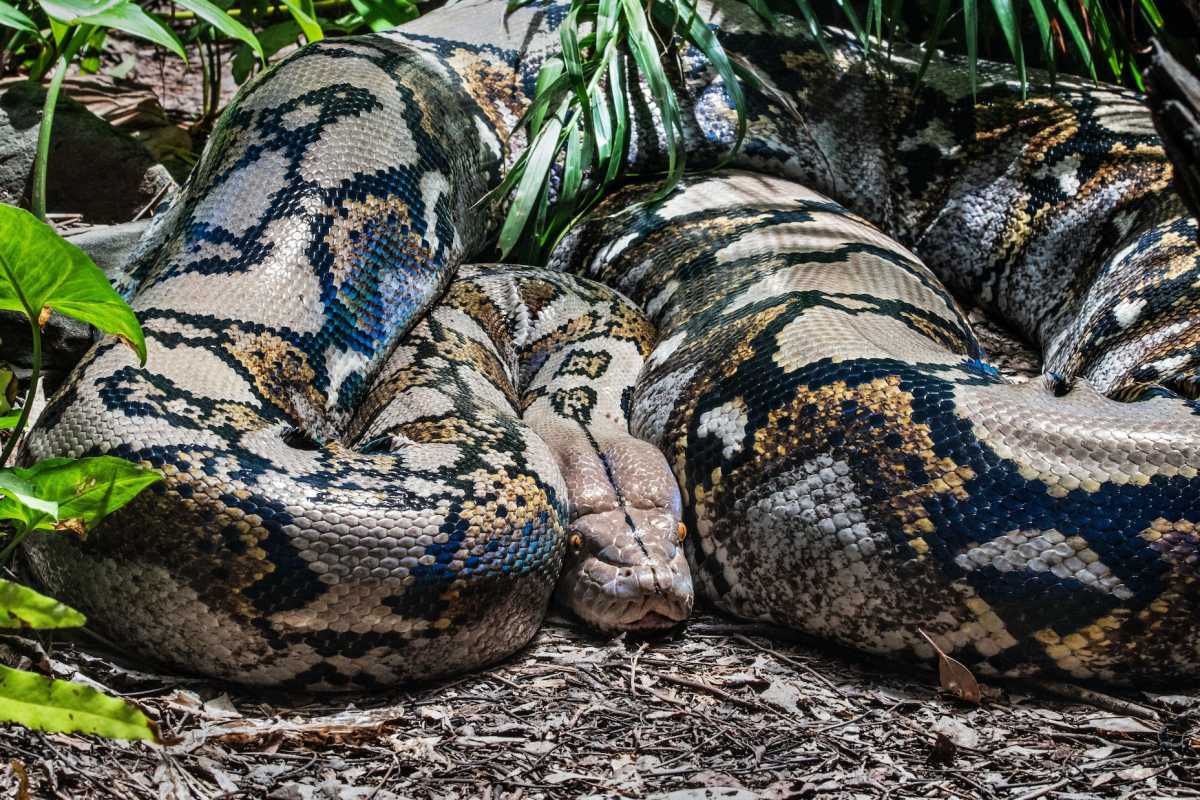
- Name: Reticulated python
- Scientific name: Malayopython reticulatus
- Conservation status:
Even though this snake species is not venomous, it is definitely very scary. The reticulated python is the world’s largest snake (except for a contested anaconda specimen claim), and is a constrictor.
It is widely distributed, therefore considered of least concern, and adult humans have been killed and sometimes eaten by reticulated pythons. Outside of these accidents, this snake mostly feeds on small mammals but was already seen eating primates, pigs, and deers.
—
So there you have them, these were my 18 native animals of Cambodia. I hope you enjoyed this list and that you learned something new today.
In case you want to learn more about the wildlife of Cambodia, feel free to keep reading, as I still have lots of things to tell you about:
Endangered Animals of Cambodia
This is definitely the saddest part of the list, but it is essential to raise awareness. Because of this, let’s go through the list of endangered animals in Cambodia.
Here are the animals in danger of extinction in Cambodia.
- none
- Giant pangasius
- Javan rhinoceros
- Sunda pangolin
- Elongated tortoise
- Largetooth sawfish
- and 40 more…
- Eld’s deer
- Masked finfoot
- Spinetail devil ray
- Owston’s civet
- White-winged duck
- and 68 more…
To see the full list of endangered species in Cambodia, head over to the International Union for Conservation of Nature’s Red List.
What is the National Animal of Cambodia?
The national animal of Cambodia is the kouprey.
The kouprey is a wild species of bovine native to Southeast Asia. Though not much is known about it, it is listed as critically endangered due to hunting by locals and soldiers for meat, horns, and skulls (for use in traditional medicine), as well as diseases and habitat loss because of agricultural expansion.
There are probably less than 250 wild individuals right now, and this species might even be already extinct.
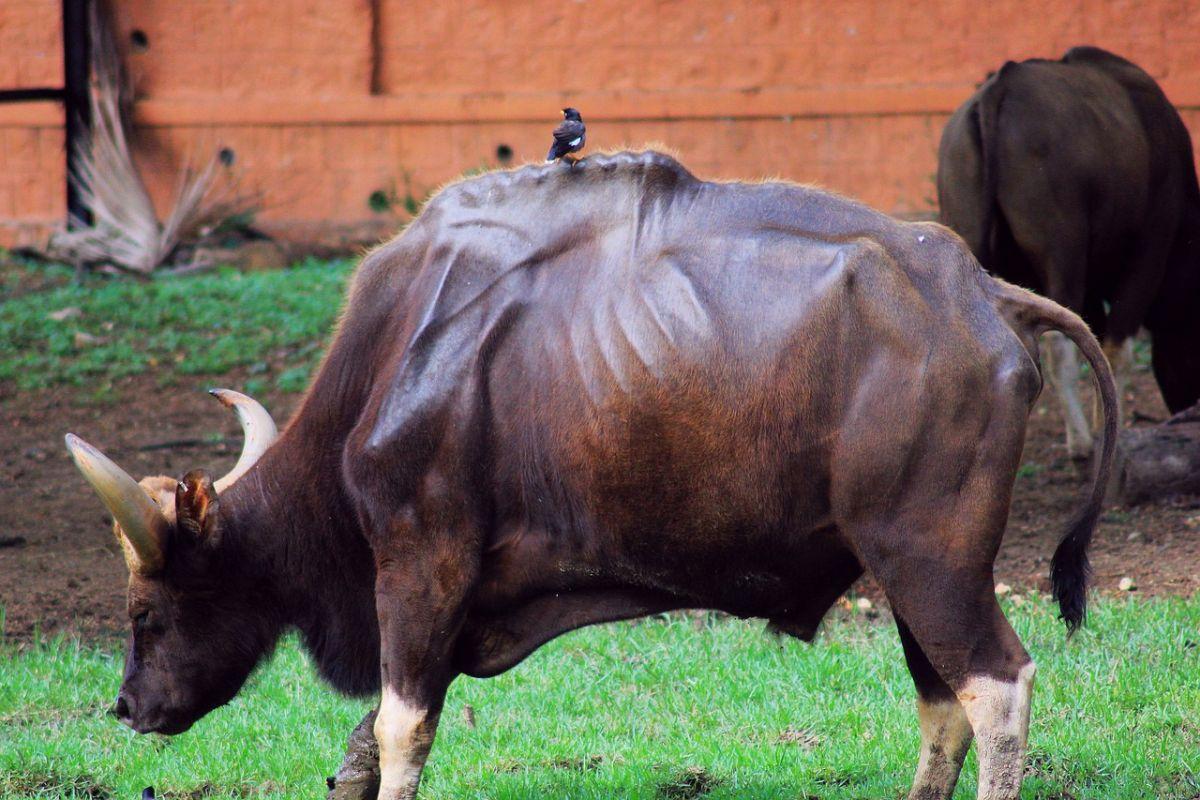
How Many Animals Native to Cambodia?
What is the diversity of native animals in Cambodia?
Let’s look at the total number of species of Chordata (mammals, birds, fishes, and reptiles).
Total number of animal species in Cambodia: 2,286 (15,319 in total in South and Southeast Asia)
More About Animals in the World!
Loved these Cambodia animal facts? Want to see what animals live in other countries?
Then check out these posts:
Or click here to see ALL the facts up on the blog! Spoiler alert: there’s A LOT of them.
Share the knowledge! Click on the buttons below to share information about Cambodia wildlife with your friends, and help them learn more about the world 🙂
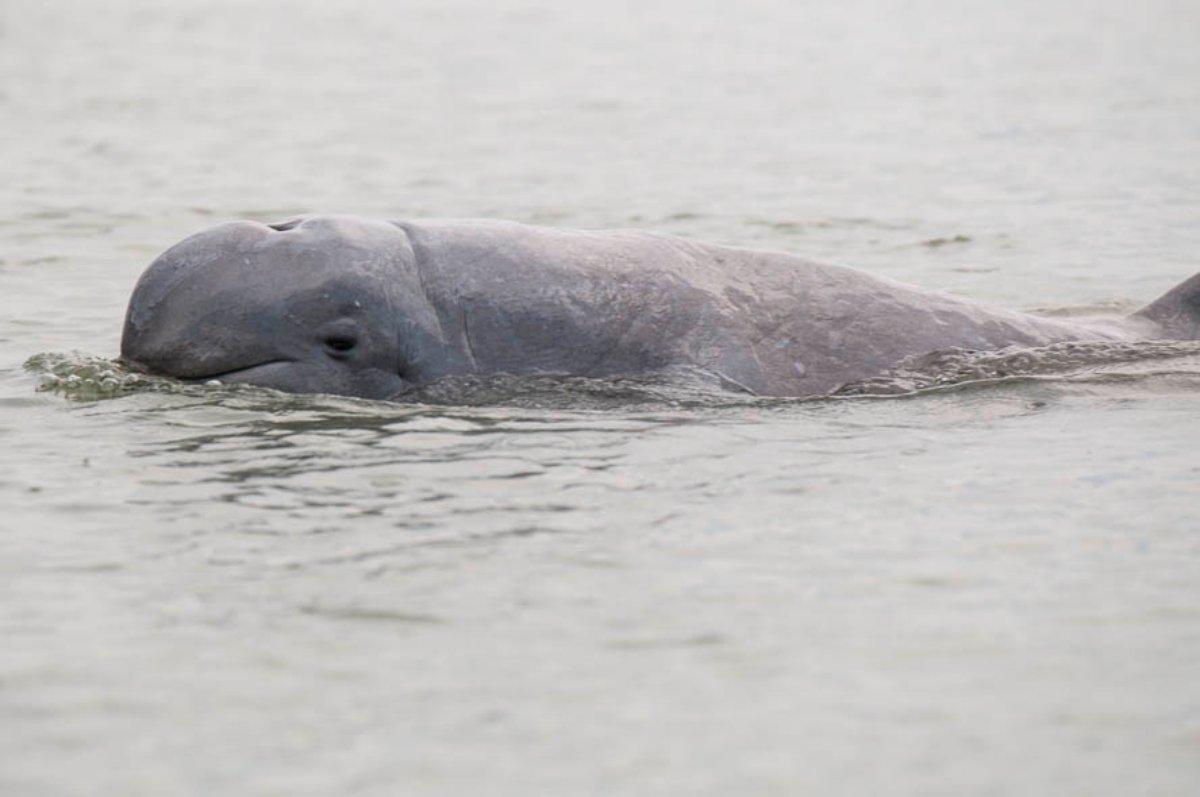
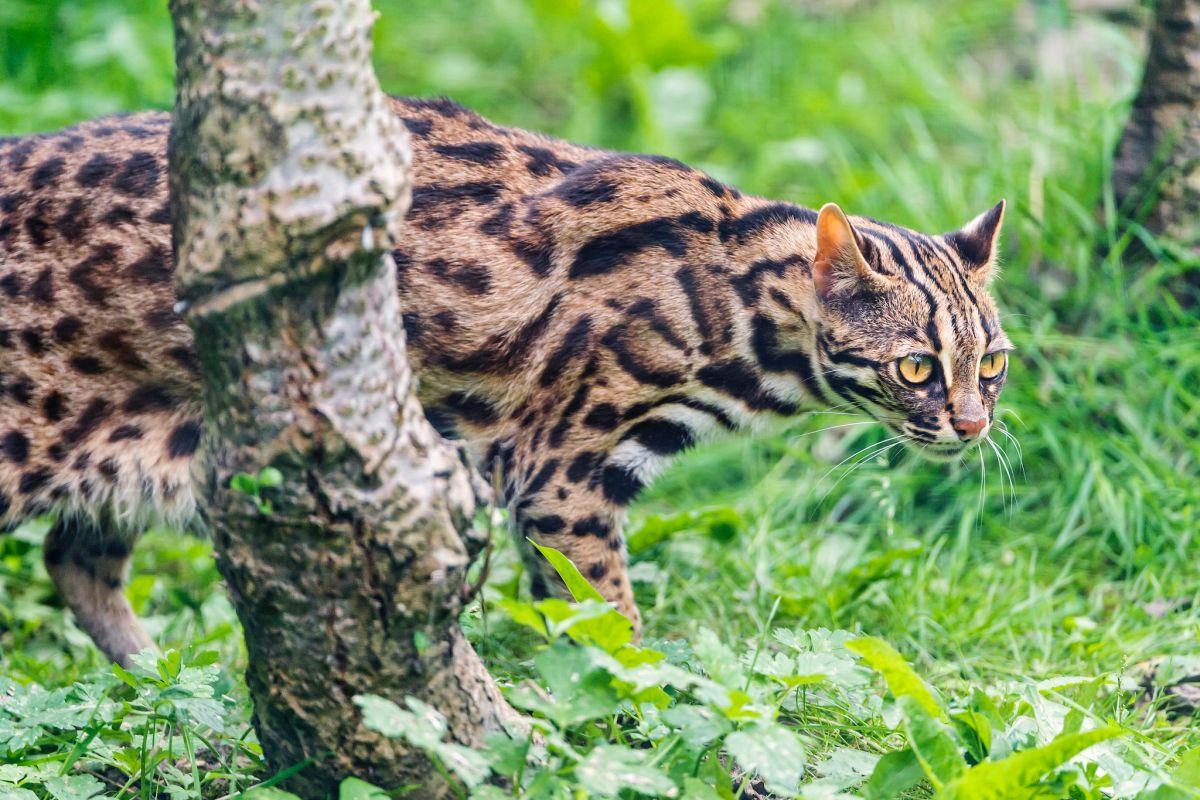
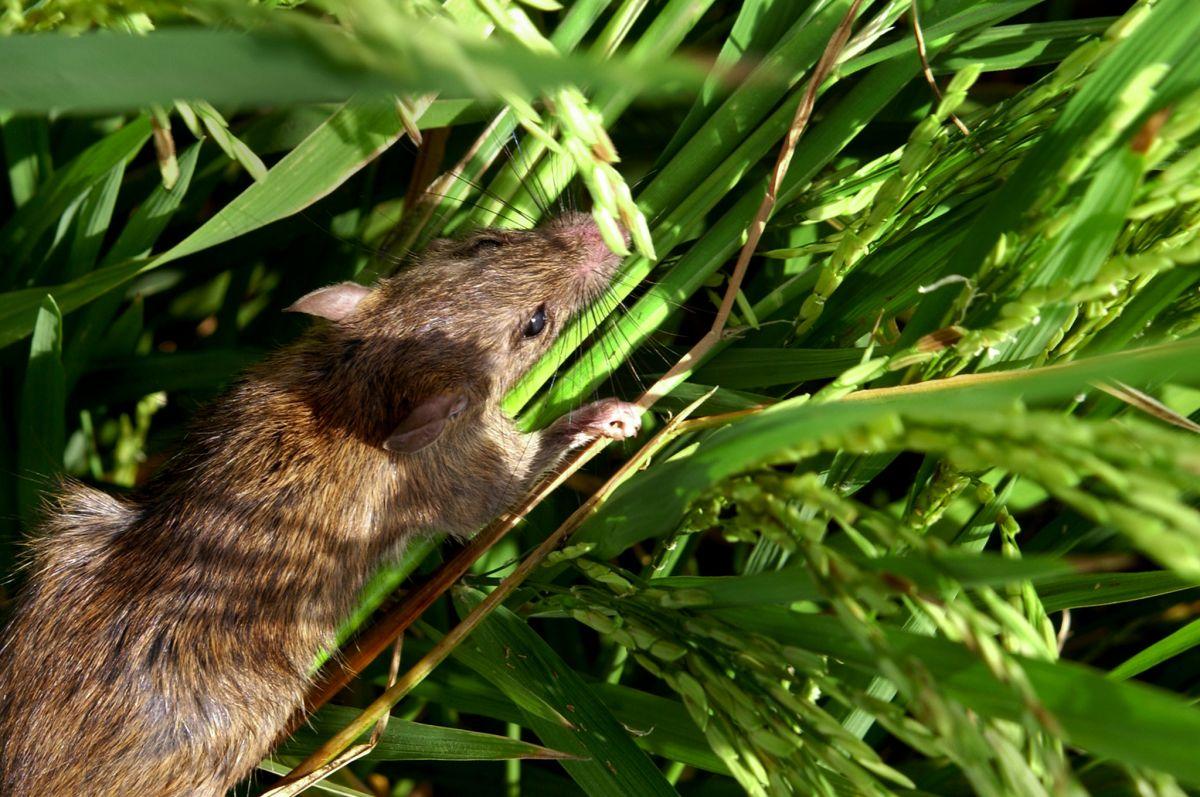

![21 Wild Animals in Montenegro [Wildlife in Montenegro]](https://www.kevmrc.com/wp-content/uploads/2022/06/21-wild-animals-in-montenegro.jpg)
![16 Wild Animals in South Australia [Wildlife in South Australia]](https://www.kevmrc.com/wp-content/uploads/2023/01/16-wild-animals-in-south-australia.jpg)
![20 Wild Animals in Poland [Wildlife in Poland]](https://www.kevmrc.com/wp-content/uploads/2022/08/20-wild-animals-in-poland.jpg)